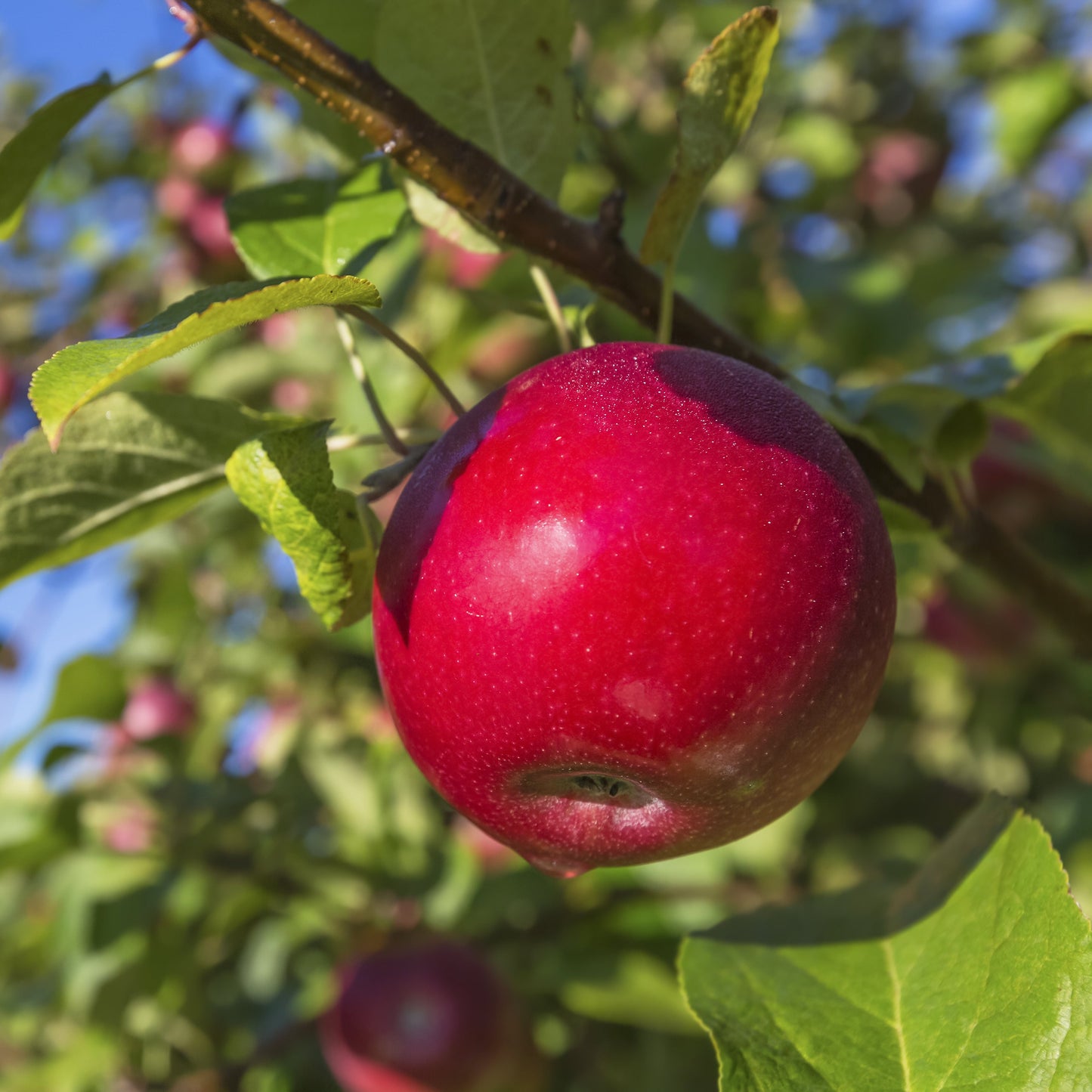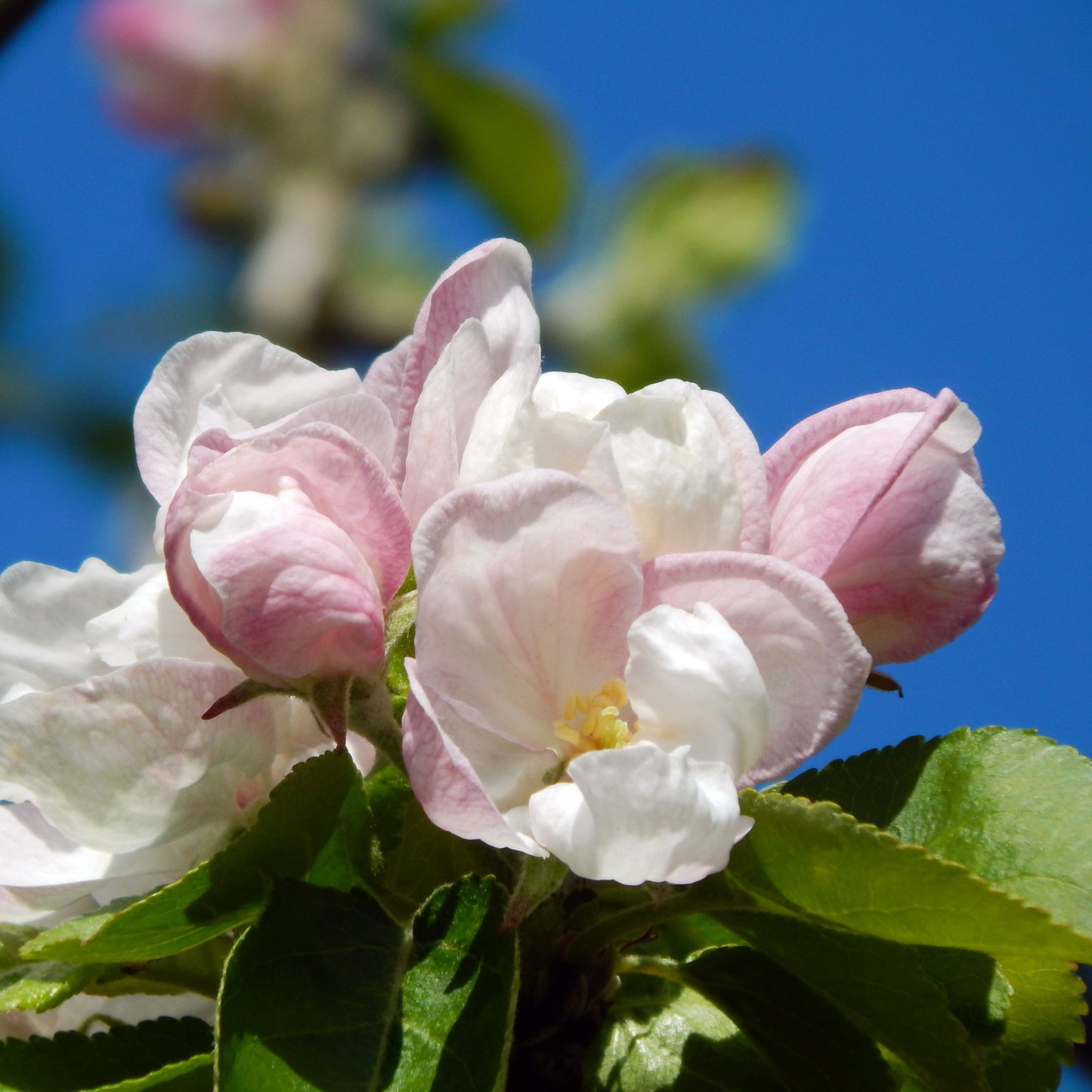Limited Quantities - Reserve Now For Fall
-
Intermediate Zones 4-8

-

-

-

Fireside Apple Tree
Fireside Apple Tree
Couldn't load pickup availability
Malus domestica ‘Fireside’
Fireside Apple Tree
The Fireside Apple Tree is a cold-hardy, late-season apple variety known for its large, sweet, and juicy fruit with a hint of spice. A Minnesota original developed for northern growers, Fireside apples are excellent for fresh eating, baking, and long-term storage. This vigorous tree offers reliable yields, beautiful blossoms, and strong disease resistance.
Perfect for home orchards, northern climates, and edible landscapes, Fireside performs especially well in cold-hardy regions that experience long, frosty winters.
Fireside Apple Tree Overview
| Attribute | Details |
|---|---|
| 🌿 Botanical Name | Malus domestica ‘Fireside’ |
| 🏷️ Common Names | Fireside Apple, Connell Red |
| 🌳 Mature Height | 12–18 feet (semi-dwarf); 8–12 feet (dwarf) |
| 🌐 Mature Width | 10–15 feet |
| 📈 Growth Rate | Moderate (1–2 feet per year) |
| ⏳ Lifespan | 30–50 years |
| 🧊 USDA Zones | 4–8 |
| ❄️ Chill Hours | 900–1,000 hours |
| ☀️ Sun Preference | Full sun (essential for best color and flavor) |
| 🧱 Soil Type | Well-drained loam, sandy, or slightly rocky soils |
| ⚖️ Soil pH | Slightly acidic to neutral (6.0–7.0) |
| 💧 Water Needs | Moderate; prefers consistent moisture |
| 🍎 Fruit Type | Large, red-striped apples with crisp, sweet, aromatic flesh |
| 🌸 Flower Color | White to pale pink; blooms mid to late spring |
| 🐝 Pollination | Requires a pollinator – pair with Honeycrisp, Haralson, or Liberty |
| 🌿 Growth Habit | Upright, rounded canopy |
| ↔️ Spacing | 12–15 ft (semi-dwarf); 8–10 ft (dwarf) |
| 🏡 Landscape Uses | Home orchards, northern edible gardens, pollinator borders |
| 🧹 Maintenance Level | Moderate |
Environmental Benefits
🌸 Provides mid-spring blooms that attract bees and beneficial insects
🍎 Encourages cold-climate food resilience and self-sufficiency
🌿 Offers seasonal shade, pollinator value, and late fall harvests
🪶 Produces fruit and habitat value for wildlife during autumn months
Pros & Cons
| ✅ Pros | ⚠️ Cons |
|---|---|
| 🍎 Excellent flavor, size, and long storage potential | 🐝 Requires a compatible pollinator to bear fruit |
| 🌬️ Developed for cold climates with strong winter hardiness | 💧 Needs consistent watering for best fruit set |
| 🍏 Great for fresh eating, baking, and storing | ✂️ Annual pruning required to maintain shape and yield |
| 🌸 Attractive spring blossoms add ornamental value | ❄️ Not ideal for warm low-chill regions |
| 🧬 Disease-resistant and reliable in northern landscapes | 🐛 May require protection from common apple pests |
Planting & Care Guide
🛁 Water thoroughly before and after planting; maintain consistent soil moisture
🕳️ Dig a hole twice the width of the root ball; plant with graft union 2 inches above soil
🌾 Mulch 2–3 inches deep around the base to reduce weed pressure and hold moisture
💦 Water weekly during the first growing season; increase during hot or dry spells
✂️ Prune in late winter to improve airflow and encourage fruiting wood
🧪 Fertilize each spring with a balanced apple-specific fertilizer
The Fireside Apple Tree is a cold-hardy favorite for northern growers who want sweet, crisp, late-season apples with excellent keeping qualities. Whether you're stocking a winter pantry or enjoying orchard-fresh snacks, Fireside brings bold flavor, heritage performance, and northern reliability to your edible landscape.
Share








